High-Efficiency Industrial LED Lighting Solutions: KD-HBD Series
5-Year Warranty | IP65 Rated | Customizable Illumination for Demanding Environments
1. Introduction: Solving Industrial and Commercial Lighting Challenges
Modern industrial and commercial facilities face persistent lighting challenges: soaring energy costs, frequent maintenance of outdated fixtures, and poor performance in harsh environments. Traditional lighting systems often fail to deliver consistent brightness, durability, or adaptability – costing businesses time, money, and operational efficiency.
The KD-HBD Series LED High Bay Lights revolutionize industrial illumination with cutting-edge engineering. Designed for longevity, energy savings, and unmatched versatility, these fixtures provide a seamless upgrade path for warehouses, factories, outdoor facilities, and commercial spaces.
Watch UFO LED Light Video:
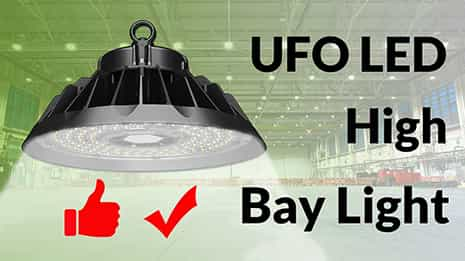
2. Technical Superiority: Engineered for Peak Performance
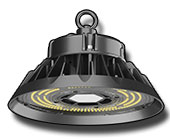
100 Watt
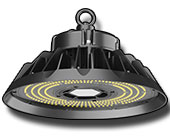
150 Watt
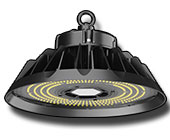
200 Watt / 240 Watt
Key Specifications
| Model | Dimension | Power |
| KD-HBD-W100-1 | Ø248mm X 129mm | 100 Watt |
| KD-HBD-W150-1 | Ø295mm X 140mm | 150 Watt |
| KD-HBD-W200-1 | Ø320mm X 154mm | 200 Watt |
| KD-HBD-W240-1 | Ø320mm X 154mm | 240 Watt |
| Mounting Height | 100 Watt: 15–20 ft (4.5–6 m) 150 Watt: 20–30 ft (6–9 m) 200 Watt: 30–40 ft (9–12 m) 240 Watt: 40–50 ft (12–15 m) |
|
| Input Voltage | AC 90V – 305V |
| Colour Temperature | 3000K / 4500K / 6000K |
| Color-rendering index | 80+ |
| LED Type | LED SMD 2835 ( OSRAM ) |
| IP Grade | IP65 |
| Material | Aluminium + PC Lens |
| Luminous Efficiency | 150 Lumens per watt |
| Beam Angle | 60° / 90° / 120° |
| Warranty | 5 Years |
Competitive Advantages

Industrial-Grade Durability:
Constructed with aircraft-grade aluminum housing and shatterproof PC lenses, the KD-HBD series withstands extreme temperatures (-30°C to 50°C), humidity, and dust. The IP65 rating ensures reliable performance in rain, snow, or dusty environments.

Energy Efficiency and Cost Savings:
Utilizing OSRAM SMD 2835 LEDs – renowned for high luminous efficacy (150LM/W) – these fixtures reduce energy consumption by up to 60% compared to metal halide lamps. With a 90V-305V wide voltage input, they operate flawlessly in regions with unstable power grids.

Adaptive Lighting Control:
Choose from 3 color temperatures (3000K warm white, 4000K neutral, 5700K daylight) and 3 beam angles (60° spot, 90° medium, 120° flood) to tailor lighting for precision tasks, safety compliance, or aesthetic displays.

Long-Term Reliability:
A 50000-hour lifespan (5.7 years at 24/7 operation) and 5-year warranty eliminate frequent replacements, reducing downtime and maintenance costs.
Say Goodbye to Traditional HID Lights: Unlock a New Era of Efficiency and Savings
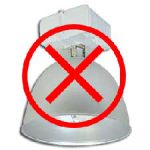
Traditional HID lighting systems are stealthily draining your profits! With 400W high energy consumption, inefficient light output of only 50-80 lm/W, and 30% of energy wasted as heat, these outdated fixtures force you to pay thousands extra in annual electricity bills.
Frequent replacements (every 10000 hours due to 40% lumen depreciation), 5-15 minute restrike delays, poor color rendering (CRI less than 65), and UV radiation damaging sensitive materials – these hidden costs are eroding your productivity and profits!
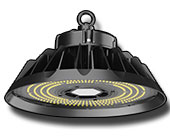
Coydon UFO LED lights revolutionize industrial lighting:
200W ultra-low power consumption delivers 150+ lm/W efficiency, reducing heat output by 70% and slashing annual electricity costs by 64% (case study: a warehouse cut costs from $52000 to $18000).
50000-hour lifespan with minimal lumen depreciation, ensuring less than 10% reduction, guarantees near-zero maintenance for over 5 years.
Instant start-up, CRI of 80 or higher for true color accuracy, and UV-free design eliminate safety risks and defects.
3. Real-World Applications: Success Stories
Project 01: Professional Lighting Solution for Outdoor Basketball Court


Project Overview
- Site Dimensions:
20m (width) × 32m (length), total area 640m². - Installation Height:
6m (from luminaire to ground), ensuring optimal light coverage. - Product Configuration:
15 × Coydon Lighting UFO LED 150W high bay lights, optimized for high-intensity outdoor sports scenarios.
Core Advantages of Luminaires
- High Efficiency and Energy Savings
Single-luminaire luminous flux: 22039 lumens (total 330600 lumens), achieving 147 lumens/watt, far exceeding traditional lighting solutions.
Total power consumption: 2190W, with energy density as low as 3.42 W/m², delivering significant energy savings. - Precise and Uniform Illuminance Distribution
Average illuminance: 370 Lux (full court), 384 Lux (core basketball area), compliant with international sports standards (300-500 Lux).
Superior uniformity: Ground uniformity (U0) of 0.537, workplane uniformity of 0.492, eliminating dark zones and ensuring safety.
Peak illuminance: 440 Lux (ground maximum), meeting demands for high-intensity sports and broadcast quality. - Professional Optical Design
Asymmetric light distribution technology minimizes stray light and maximizes utilization.
Validated by 128×128 grid simulation (DIALux), confirming scientific light distribution.
Validation and Technical Support
- Simulation-Real Data Alignment:
3D renderings and false-color maps visually demonstrate lighting performance. Vertical illuminance ratio of 0.72 balances horizontal and vertical lighting for optimal visual comfort. - Longevity and Stability:
Light loss factor (LLF) set to 0.80, ensuring luminous efficacy retention of over 90% over time. - Compliance and Safety:
CIE classification (codes 46-100), IP65 rating for dust/water resistance, and outdoor durability.
Core Client Value
- Full Coverage:
15 luminaires strategically arranged (scale 1:229) to seamlessly cover 640m², supporting 24/7 operation. - Cost Efficiency:
50000-hour lifespan reduces maintenance costs by over 60%. - Technical Credibility:
Verified by DIALux simulations, international standards, and field data, ensuring reliability.
This solution combines precision engineering and data-driven validation to deliver an exceptional lighting environment for athletes, spectators, and event operations. For customized upgrades or expanded applications, we provide end-to-end technical support.
Lighting Excellence, Empowering Every Moment on the Court
The calculation report: UFO LED high bay lights 150 watt x 15 piece ( Project 01 )
Project 02: High-Efficiency LED Warehouse Lighting System – 338 Lux Uniformity

Project Overview
- Project Name: Project 02 (Warehouse Lighting)
- Site Dimensions: 30m × 80m (Ground area: 2323.27 m²)
- Installation Height: 7 meters
- Fixture Configuration: 46 × 150W Coydon Lighting UFO LED High Bay Lights
Core Features and Advantages of Fixtures
- High-Efficiency Light Output
22039 lm per fixture, total luminous flux of 1013803 lm, ensuring bright and uniform coverage.
Equipped with OSRAM light sources, delivering stable performance with zero efficiency loss. - Energy Savings and Cost-Effectiveness
146.3W per fixture (rated 150W), total load 6729.8W, with ultra-low energy consumption.
Specific connected load: 2.90 W/m² (ground area basis), equivalent to 0.86 W/m²/100 lx, leading industry efficiency. - Uniform Illumination Design
Workplane average illuminance: 338 lx (direct 278 lx + indirect 60 lx), meeting warehouse operational standards.
Uniformity U₀=0.389, min/max illuminance ratio 1:3, eliminating dark zones and enhancing visual comfort. - Environmental Adaptability
Light loss factor 0.80, accounting for fixture aging and environmental dust, ensuring long-term reliability.
Optimized light distribution with wall reflectivity (50%) and ceiling reflectivity (70%), minimizing energy waste. - Certifications and Reliability
Compliant with CIE 99 international standards, backed by certified flux codes for guaranteed quality.
Layout validated by DIALux simulation: 46 fixtures cover 2323.27 m², each serving ~50 m², demonstrating scientific precision.
Practical Benefits
- Precision Lighting:
Achieves 338 lx uniform illuminance at workplane height (0.85m), ideal for logistics and warehousing tasks. - Long-Term Energy Efficiency:
High efficacy + low power consumption reduces annual costs versus traditional HID solutions. - Low Maintenance:
50000-hour LED lifespan minimizes replacements and operational downtime.
This solution, rigorously simulated via DIALux and powered by Coydon UFO LED High Bay Lights, ensures optimal brightness, uniformity, and energy efficiency for warehouse lighting. Transparent data and professional design guarantee a reliable, cost-effective upgrade.
For customized adjustments or further details, contact us anytime!
– Expert Lighting, Tailored Solutions
The calculation report: UFO LED high bay lights 150 watt x 46 piece ( Project 02 )
Project 03: Outdoor Basketball Court Lighting Solution


This project (No. 03) involves the lighting design for an outdoor basketball court using 24 units of Coydon Lighting UFO LED High Bay Lights (200W per unit), tailored to provide professional-grade illumination for a 22m × 65m area, meeting both competitive sports and training requirements. Below is the key overview:
Core Advantages of the Luminaires
- High Energy Efficiency:
28675 lumens per fixture (29775 lumens light source output) with a power consumption of only 204W. Intelligent optical design ensures high efficacy (3.42 W/m²), significantly reducing energy costs.
Total system power: 4896W, balancing brightness and operational efficiency while adhering to green lighting standards. - Professional Light Distribution and Uniformity:
Asymmetric light distribution (refer to photometric charts) ensures precise coverage of the basketball courts, minimizing glare and spill light.
Average illuminance: 363 Lux (entire area), with 391 Lux (Basketball Court 1) and 392 Lux (Basketball Court 2). Uniformity (U0 exceeding 0.8) fully complies with FIBA (International Basketball Federation) lighting regulations. - Durability and Adaptability:
Mounting height: 7.5 meters, optimized for an 8-meter ceiling height. Combined with a light loss factor (0.80), the design guarantees long-term brightness consistency.
Modular construction ensures easy maintenance and a lifespan of 50000 hours, reducing lifecycle costs.
Design and Validation
- Scientific Layout
Simulated via Dialux software with a 128×64 calculation grid, supported by 3D renderings and false-color analysis. Precise positioning of 24 fixtures eliminates dark zones. - Data Verification
Boundary illuminance: Min. 165 Lux, Max. 459 Lux; working plane (0.85m height) uniformity: 0.454, suitable for multifunctional use. Optimized reflectance ratios: 20% (floor) and 50% (walls), enhancing visual comfort.
Client Benefits
- Professional Assurance:
Compliance with CIE (International Commission on Illumination) standards, with transparent technical documentation (see datasheets and calculation protocols). - Long-Term ROI:
Energy-efficient LED technology combined with precise power management (0.94 W/m²/100lx) reduces energy costs by at least 30%.
This solution integrates rigorous engineering calculations with advanced luminaires to deliver efficient, reliable, and comfortable lighting for outdoor basketball facilities. For further technical details or customized services, feel free to contact us!
– Professional Lighting Solutions, Lighting Up Every Victory!
The calculation report: UFO LED high bay lights 200 watt x 24 piece ( Project 03 )
4. Versatile Applications Across Industries
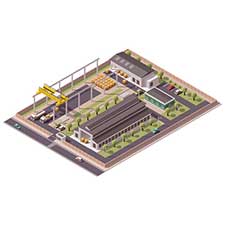
Warehouses
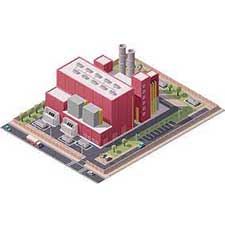
Factories
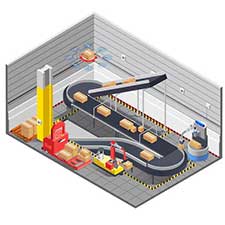
Workshops

Parking Garages
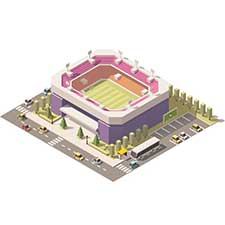
Stadiums

Supermarkets

Stations

Greenhouses
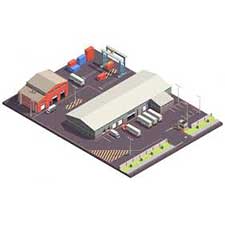
Cold Storage

Gas Stations
Remark: It can be used in places that require large-area, uniform lighting.
5. Why Choose KD-HBD Series?
-Global Compliance: CE, RoHS, and ISO 9001 certified.
-Custom Solutions: Optional motion sensors, dimming controls, or emergency lighting integration.
-Sustainability: Mercury-free design with 98% recyclable materials.
6. Trusted by Industry Leaders
Over 500 global clients – including automotive OEMs and Fortune 500 retailers – rely on our LED solutions. Together, we’ve saved 12500 MWh of energy – equivalent to powering 1100 homes annually.
Backed by 5-year warranty and 24/7 technical support, the KD-HBD series delivers peace of mind for your critical operations.
